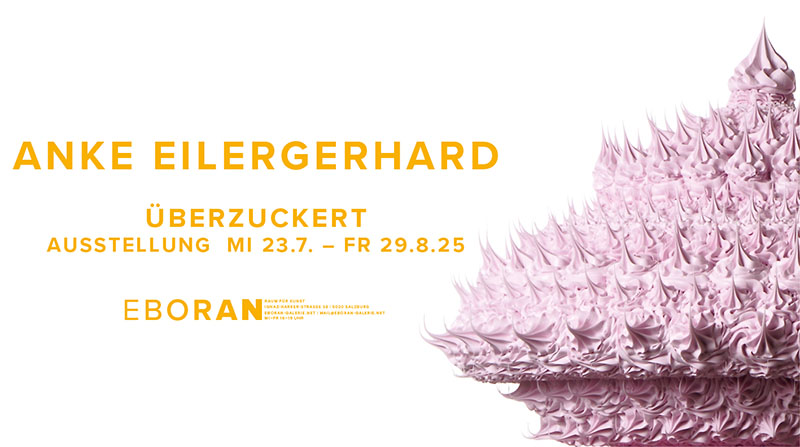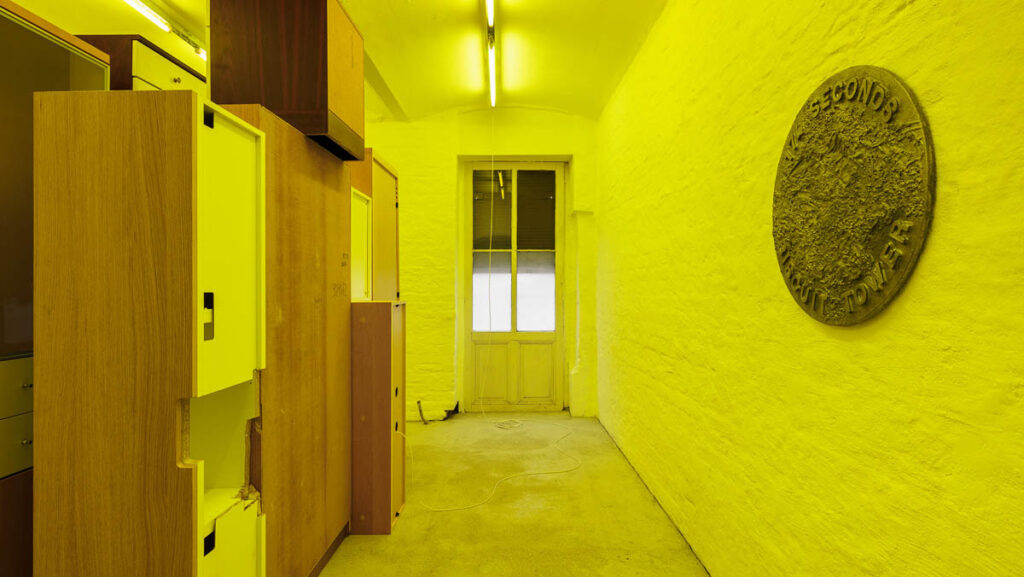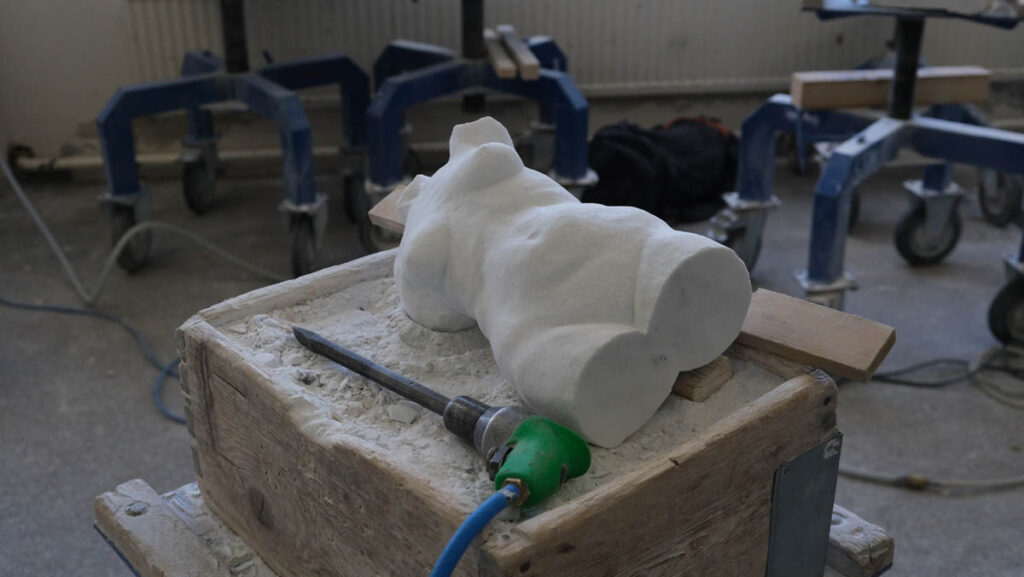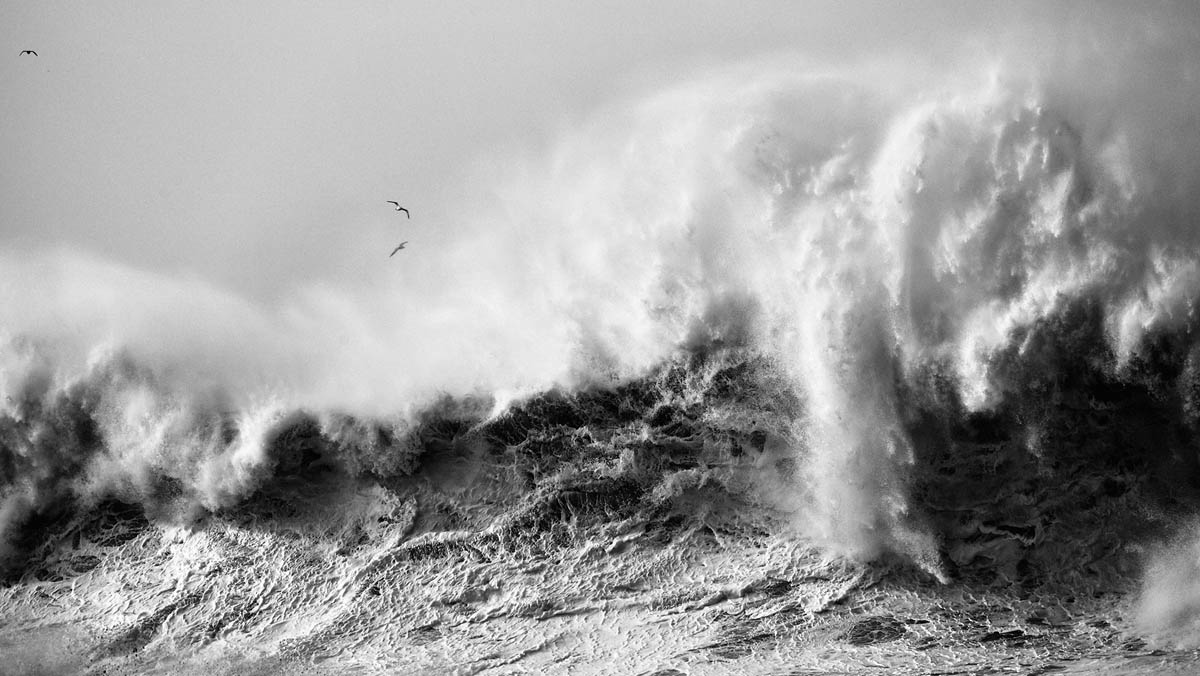
Over the years, Puccinelli has lived and worked in various locations, including Marina di Pisa, Brisbane, Lisbon, Alentejo region—each deepening his connection to the sea, a central theme of his artistic practice. His long-term photographic series Mare, cornerstone of his work began in year 2005. The series captures the sea in all its grandeur and contradictions—its powerful swells, storms, repetitions, shorelines, and the debris it gathers and returns. In Interview for Les Nouveaux Riches Magazine Erka Shalari.
Alessandro, where were you born, and how would you describe the place in your words? I would also like to ask you when you first photographed the sea.
I was born in Pisa, Tuscany, in the summer of 1969. Pisa is a charming university town crossed by the Arno River, the same river that runs through Florence. Historically a seaside city, the coastline has since receded over the years. Pisa experienced periods of glory as one of the four Maritime Republics alongside Genoa, Amalfi, and Venice. Even though the sea has retreated, it remains close, as do the nearby mountains and the beautiful, famous Tuscan hills. It’s not a bad place to live, though as I grew up, I did everything possible to leave. I like distancing myself from it, but I also enjoy returning, it will always feel like home at the end. My parents both worked: my mother was a teacher, and my father was an accountant. I spent much of my childhood with my grandparents, both maternal and paternal, in nearby Pontedera, a town famous for being home to Vespa Piaggio. I have for example beautiful memories, riding a Vespa with my grandfather, who let me steer on country roads during the warm summers, fishing in rivers, and playing freely with other children, without the restrictions or fears parents often have today. I was the first child and the first grandchild, so I received a lot of attention and affection—probably too much! I’d say I was, unintentionally, quite spoiled. In my early years, I have more memories of my grandparents than of my parents, but it was a happy childhood filled with care, kindness, and freedom.
Even later, I have wonderful memories, by the time I was 7 or 8, I was attending school while living with my parents in a new neighbourhood full of young families and, consequently, children. These were the years of Italy’s economic boom, with so much energy and optimism about the future, shared by adults and children alike. Italy had its many problems, mafia, terrorism, and corruption, but it was also a very free country with extensive rights for its citizens, like healthcare, education, and employment. It was a different time, and I feel a bit old saying this, but it was truly different. Paradoxically, while we were thriving back then, we were also laying the groundwork for harming the planet and ourselves. Back then, parents let us do almost anything. We spent entire summer days outside, roaming the neighbourhood, coming home only for lunch and dinner, and then heading out again to play with dozens of other kids. Parents were less fearful than they are now, they gave us more autonomy, trusted us, and helped us become more self-reliant. Yet those years weren’t without their issues. There was heroin in the neighbourhood, for example. But we still grew up free and independent. I spent much of my childhood between the mountains and the sea. As a child, I much preferred the mountains. The sea I knew was purely the summer seaside, which I didn’t enjoy because of the crowds. However, I loved spending hours in the warm Mediterranean waters and was crazy about the croissants a man would bring to the beach every morning. That was a wonderful summer habit, a long swim followed by a croissant.
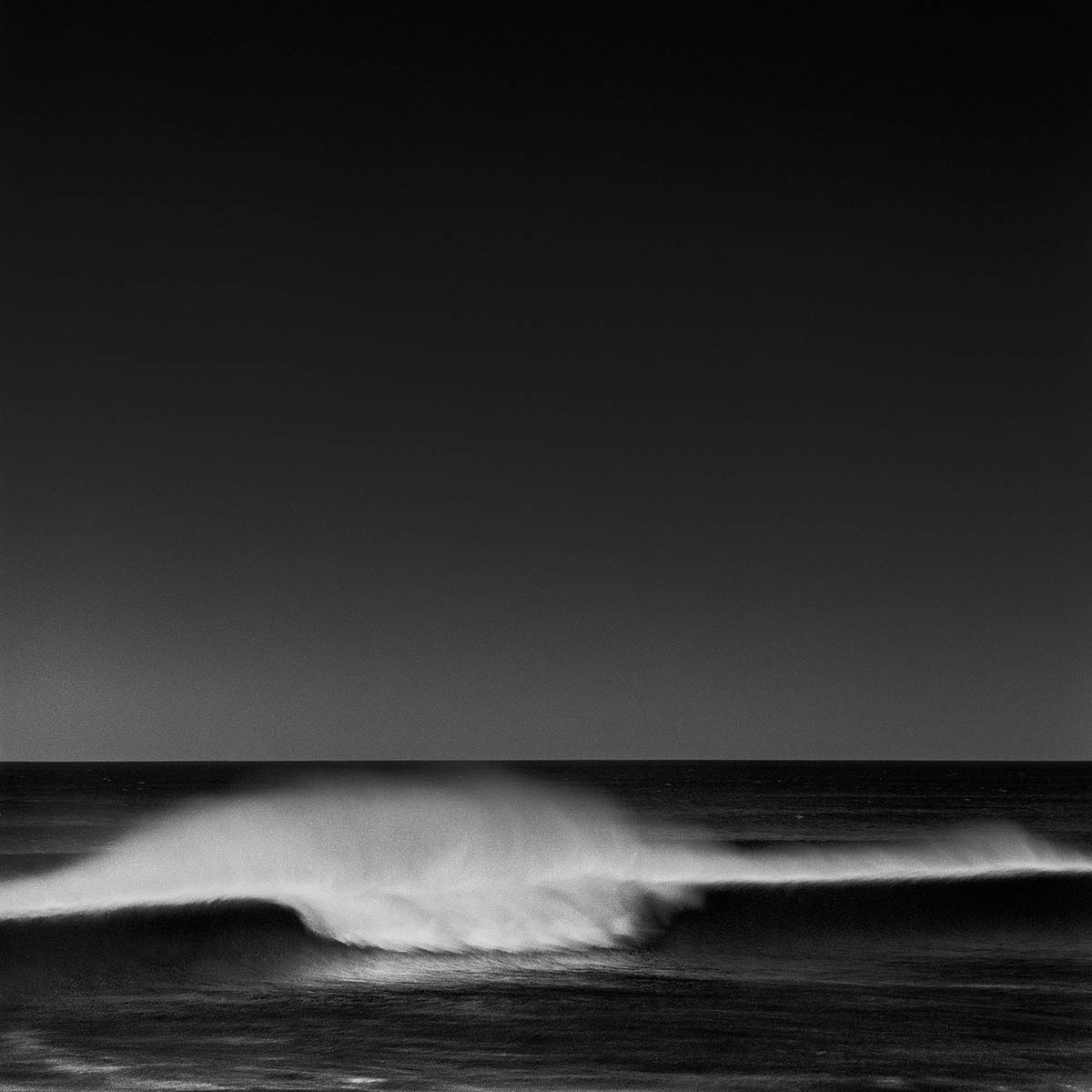
When I see my nephews doing the same thing now, I feel a mix of nostalgia and joy—a pleasant melancholy. My mother was a teacher, but art never really entered our home, except through my uncle, who dabbled in painting, and my grandfather, who was a skilled carpenter and made beautiful frames. I have many memories of my uncle painting in the garage, especially the strong smell of oil paints, while in the neighbouring garage, my grandfather worked with wood. At the same time, I have few memories of my mother, as she passed away from an illness at the age of 41 when I was just 16. Some of those memories are tied to school, she taught at the same school I attended, which was just a few meters from the sea. I remember one winter day when she took me to see the sea after school. Until then, I had only known the summer sea: calm, welcoming, and peaceful.
That day we stayed in her small Fiat 500, watching the stormy sea, the salt-filled air swirling around us and the car shaking in the wind. We sat there for a long time, gazing at the waves.
For me, it was a discovery, a wonderful moment and still a vivid memory to this day. It’s probably the strongest memory I have of my mother, along with hiding under her long skirts as a child. It was in that very spot that I took my first photograph: a simple silhouette of a seagull, which, even in its simplicity, made me think, „What a nice picture—maybe I have a knack for photography.“ Years later, I returned to that same beach to start my project on the sea. I was searching for that particular winter sea from my day with my mother. I used a Sinar 4×5 with black-and-white Polaroid film, a beautiful, incredibly high-quality film I had received as a prize from Polaroid’s annual awards. Now, as I write this, I wonder: every time I photograph the stormy sea, am I unconsciously trying to relive that special moment with my mother—a half-hour of deep intimacy with a woman who would leave us just a few years later due to a cruel illness? That small beach is in Marina di Pisa, near Pisa.
How did photography then come into your life? Could you elaborate on that journey?
My encounter with photography happened in Italy, even before going to Australia. I was 20 years old, having just finished my mandatory one-year military service. At that time, I was supposed to follow in my father’s footsteps, a skilled accountant with a well-established practice. However, I didn’t enjoy that work, so without thinking much about it, I asked my father to give me his Nikon, which he no longer used. I quickly became passionate about photography, but there weren’t many schools, and those that existed were pretty expensive. With a bit of luck, I found an assistant job in a studio outside the city where they photographed products for commercial catalogs, which at the time required professional preparation. The photos were not retouched, and the products had to look beautiful and attractive. A simple mistake meant you had to redo the shot. I learned quickly and started getting assignments where I would do the photography myself. It was very technical photography; I didn’t yet think of photography as a means of personal expression. At that moment, it was simply a way for me to emancipate myself from my father and the future he had „planned“ for me. At that time, I had a dream of living in Australia, not so much for photography but for surfing, which I had only recently begun to discover. One day, at the door of this anonymous provincial studio, a young Australian knocked. He was an aspiring photographer who had already worked in Australia with a skilled advertising photographer. We became friends, and he set me in contact with this Australian photographer, named Peter Mylonas. Emails didn’t exist yet, they would come a few years later, but I still managed to make contact. In the end, I went to Australia, met this photographer, and after working as a painter in the studio for a few months, I became his assistant. It was four wonderful years with many business trips to Asia and Australia. Peter Mylonas was responsible for the photography of the Sheraton chain in Asia and Australia, and we spent a lot of time in these luxury hotels in special places. The days were exhausting, but the work and the opportunity I had been given were truly unique for me. He used a lot of equipment, many lights, a 4×5 camera, huge tripods—everything was very heavy, and I took care of it. Over time, he started to trust me more, and I began to set up the lights for the shoots. Gradually, the work became more engaging and fun. The photos were meticulously planned with dozens of tests on Polaroid before the final shot. There was a lot of downtime waiting for the Polaroid to develop, and several hours of work for each photo. It’s an approach to photography I often miss. It was definitely more fascinating, and the imperfections were more easily accepted, even in advertising.
The images were more human compared to most of the ads today. The studio had a darkroom for black-and-white printing. That’s where I had my first serious encounters with black-and-white images. I enjoyed staying in the darkroom after work, printing and printing in complete silence. I would always stay late, but I loved it and felt like I was learning something important.
I learned a lot during those years. I learned a difficult, complicated photography, full of attention to detail, precision, and a lot of technical knowledge, but within all of this, there was still space for creativity. When I didn’t stay in the darkroom, I used the studio directly as a photo set. The photographers allowed me to use their equipment, and little by little, I started building my own commercial portfolio. I was eager to start my career, maybe too eager. If I could go back, I would assist for another couple of years; it was a fun job. I prepared a portfolio focused exclusively on the commercial side, and truth be told, I copied a lot from the photographer I was assisting. On the other hand, with no artistic background, I was like a weather vane in the wind. One evening, I started photographing two forks in different positions, which to me represented different moments of an interpersonal relationship—my own relationship at that moment, a relationship that, after much love, was unfortunately ending.
I think those were the first images in which I tried to express myself, rather than simply making a product look attractive. I remember the photographer liked them a lot. He said they were the best I had made up to that point.
Life in Australia was very enjoyable. During the week, I was in the city at the studio, and on weekends, I would surf with friends and live in a van by the sea. I didn’t think at all about photographing the sea at that time, I was still too inexperienced, but we had a lot of fun. I believe that in Australia, I started looking at nature differently, with more respect, and with greater awareness.
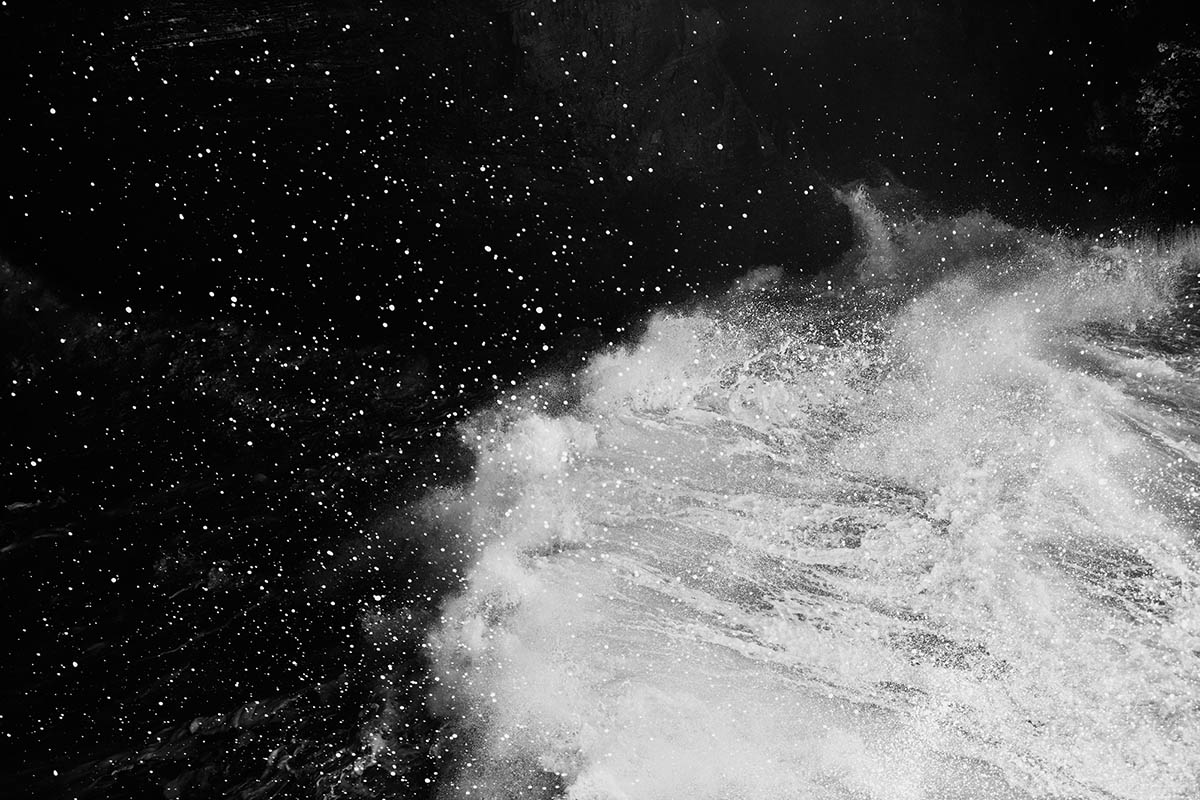
After Australia, other countries become part of your life. What do you consider crucial when choosing a place to be, live?
Definitely the quality of the surf. So it has to be a country bathed by the ocean and also an area subject to big storm surges and storms. It has to be a place where I feel good, where I encounter harmony with the place and the inhabitants. It is a matter of feelings, I let myself be carried away by what I feel, I also take into consideration the rational side, but in the end, it is the feelings that win and on which I decide. I like to choose places that are still little known, where big tourism or the great masses have not yet arrived. Portugal for example. Nowadays, it’s a country where everybody wants to go, a country that’s filled with internationals and is on everyone’s lips. But when I started living in Lisbon, nobody cared, it was 2008, and when I said I was going to move to Portugal, I was told, „What are you going there for, there’s nothing there.“ I lived well in Lisbon, but then at some point, the instinctive, irrational side won out and I moved to the south, to a rural area at the foot of the ocean. The reason is that, there in the south, in that region called Alentejo, I had found those warm and pleasant feelings that make you think of that place as home, your home. I remember the first time I arrived at the beach where I later nearby bought a house. I parked the car at the top of the cliff, facing the beach, and looked down at it. The view was exciting, and inside me, I heard echoing,
“ this is home.“ And it really was. And even though it’s no longer mine, those places will forever remain home. Recently, I decided to leave Portugal, and now as soon as it’s possible, I’m going to look for a new place, I think it’s going to be Asturias or Galicia, two regions still with development potential that are still accessible at the moment. I will leave in search of green places, wet by the sea but green, I feel the need to be surrounded by lush nature. On the other hand, many years in southern Portugal where it never rains have accentuated this need. As soon as possible, I will leave with the RV and at some point find a place with the necessary magic and energy, and stay there for the years to come.
Your photography is predominately black and white. What drew you to this approach? And when do you sometimes decide to photograph in colors?
I became immediately fascinated with BW from the moment I started printing in the darkroom in Australia. I have always preferred BW to color, although in recent years I am using color much more, for some reason unknown to me, I am almost to the point of preferring color to BW at this very moment. The use of BW for the Mare series goes back to the need to simplify and focus on the geometries, elegance and strength that coexist together. Initially the series, only in square format, was intended to be almost a Zen representation, extremely simple and linear but no less intense. In this case, BW and square format helped me a lot.
For the Mare project I continue to use BW, for the other parallel projects color is becoming predominant, especially since I have been using the fuji medium format which for color is very soft and delicate.
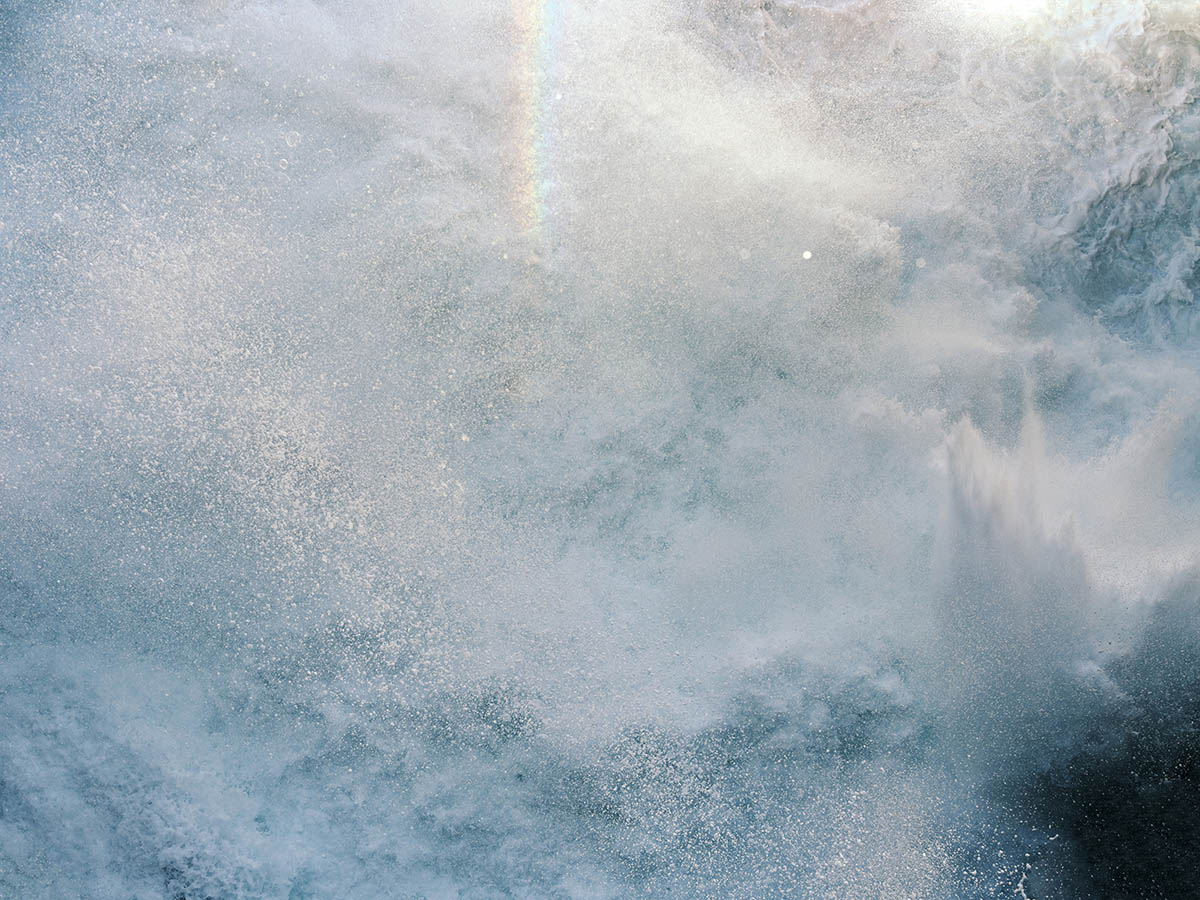
The equipment nowadays is very simple, Fuji medium format digital camera that allows me to print very large and few lenses that I carry with me, normally there are two sometimes when I need to take pictures from very far away I carry three. Many camera protection bags, practically in front of the sea the camera is always inside a rain bag. I don’t like to use a tripod, I do everything freehand except when I have to use a very long and heavy lens. As much as possible I try to get as close to the situation as possible using the equivalent of 50 mm i.e. a normal lens., The first years of the Mare series, in truth I used only and exclusively the 50 mm though it precluded me from many places and perhaps possibilities.
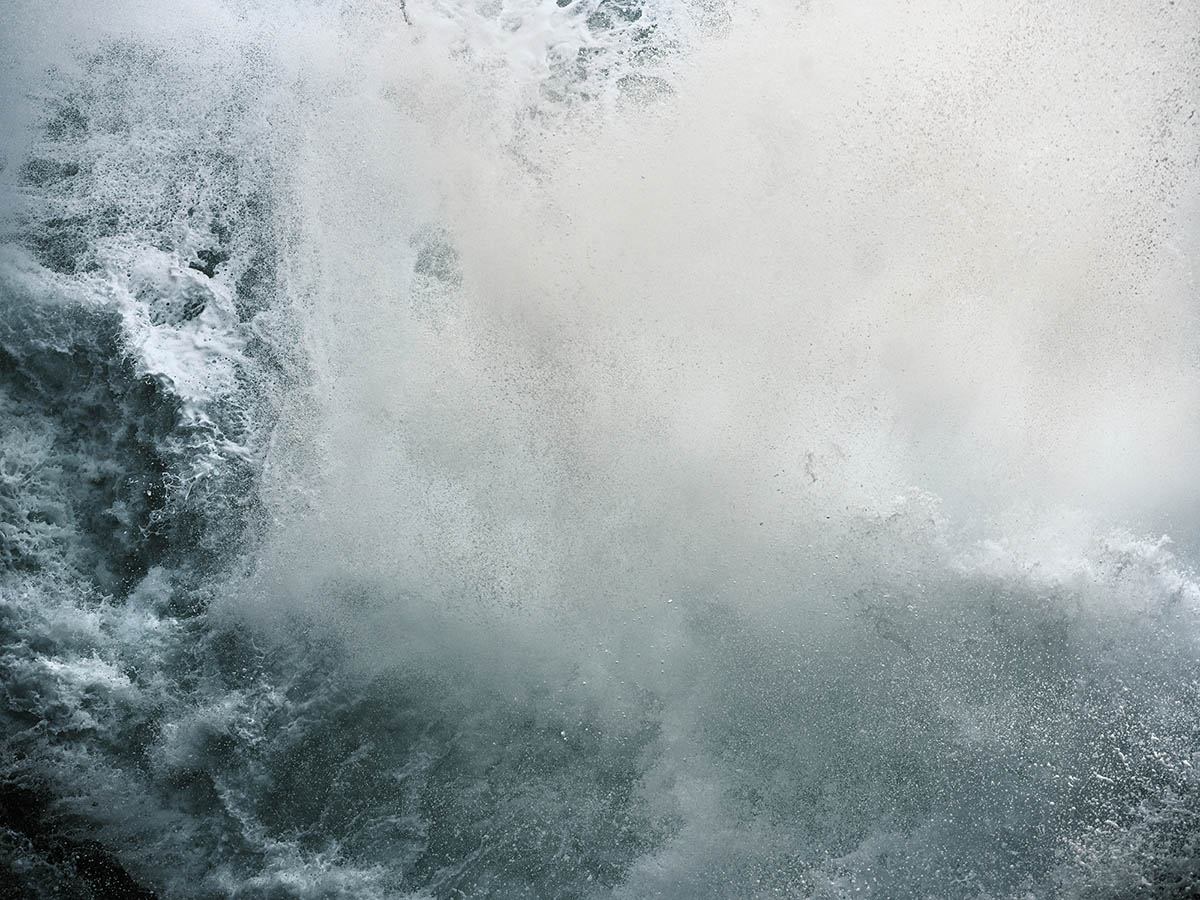
Since the big swells in Europe have decreased a lot in the last 10 years, I decided to use telephoto lenses as well, with the understanding that the priority is to get as close as possible to the subject. In recent years, the Mare series has become a perpetual search for only big swells, but now I’d like to change that a bit. Maybe with the move to northern Spain, I’ll be able to find new stimuli and new landscapes. Right now about the future, I feel the need to make some seemingly „normal“ seascapes special without necessarily waiting for the swell of the year. It’s not easy, the line is very blurred between a valuable image that communicates and a beautiful but already seen and reviewed one. The sea is not an easy subject to photograph. Last spring, I had started a work that I then had to interrupt with the provisory title“ Passeiando a beira-mar.“ I think I will resume it next spring, I would like to do a small series on walking along the deserted beach. For me, walking along the shoreline is a very special moment to which I give a certain importance in my daily life.
I would like images that provide a pleasant feeling of disarray, of instability. After all, we are walking between two worlds, one more rational, the terrestrial, and one more dreamlike and inaccessible, the marine. And then there are all those wonderful reflections on the smooth sand that literally take me to another dimension.

Which picture marks the start of the Mare project?
About the first image of the Sea, I already answered, in one of the previous questions. I can add, though, that the first image that marks the birth of the Mare project was in Portugal in December 2005. It was the first trip to Portugal and it was there that I decided to move to Lisbon in the following years. It was precisely the first few days in Portugal and a friend lent me her car so I could go for a drive along the Portuguese coast. I had no idea where to go and I went to the sea in the vicinity of Lisbon, not knowing what conditions I would find. I was very lucky and found beautiful conditions early in the morning, the waves were perfectly aligned as is often the case with winter storms, that wonderful geometry reminded me of a line from Jack London, „The infinite sea army. “
I had a Pentax 6×7 film camera and a few rolls with me, began to photograph, and as soon as I looked through the viewfinder, I realized that I wanted to treat the sea subject like this.
Wide empty spaces, cut few white lines. Strength and elegance coexisting in the same element. Although the approach has changed a bit over the years, this baseline always remains. One of those few images, „Sea 03“ Praia do Guincho 2005, is still part of my portfolio.
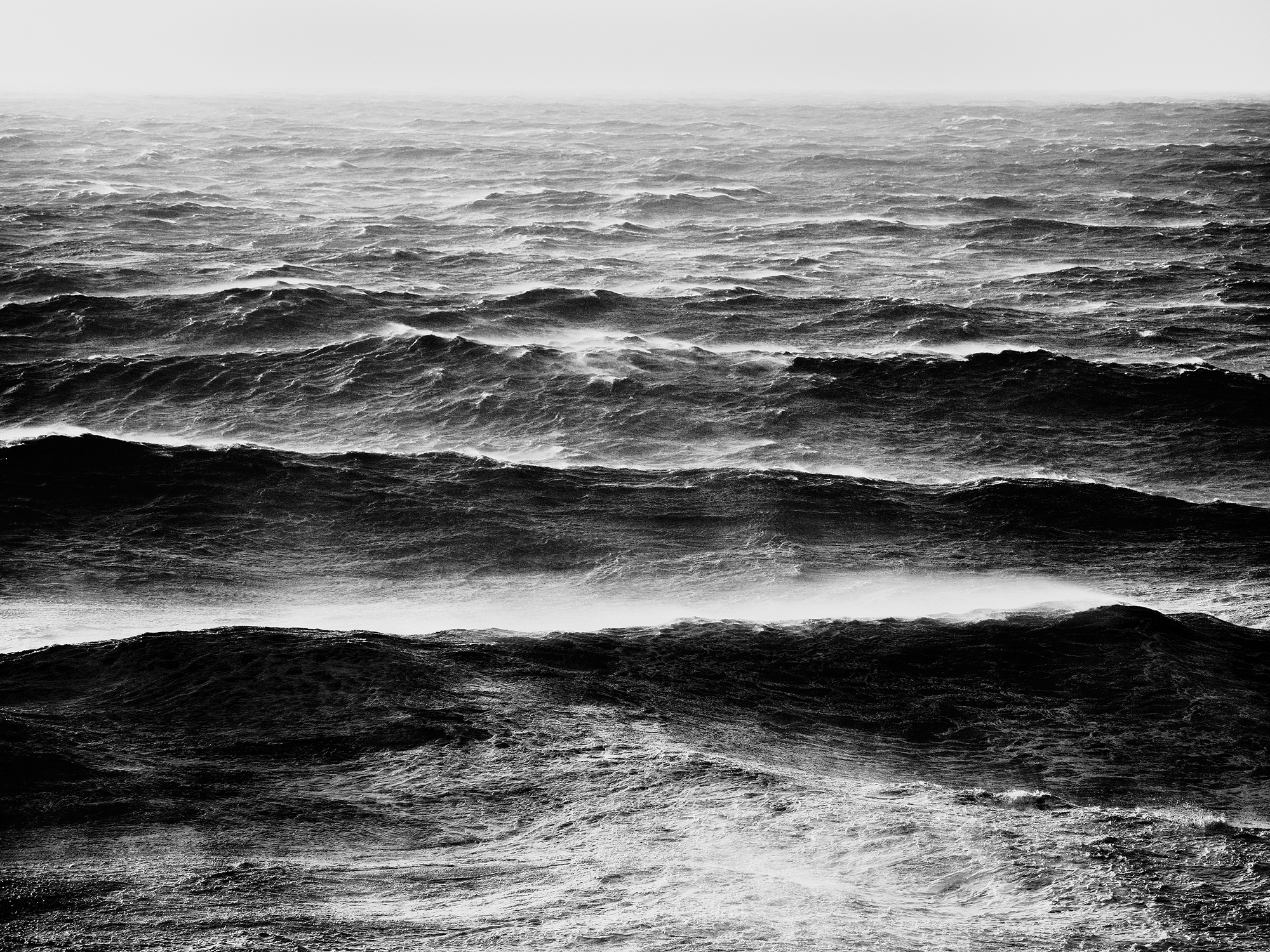
When we last spoke, you mentioned that your fascination with the sea has remained steady, but your physical relationship with it has evolved. It feels like, at first, the sea was something you admired from afar, then, as you learned to surf, you engaged with it directly. Now, you’ve said you no longer surf but still enjoy being close to it.
On your observation of having started the sea with a glance from afar and then getting closer, I agree wholeheartedly. Actually, I started surfing before I became a photographer, it’s just that when I started the Mare series I wasn’t surfing much, I had kind of drifted away from the sport. Actually, photographing the Mare series I felt the need slowly to get closer and closer and also to start surfing frequently again. At the moment I have by no means stopped, recent events have taken me away from surfing, but I very much hope to return to surfing soon.
One of your many shoots of mare became the cover of the album of the US indie rock band Cigarettes after Sex. How did it come to this collaboration?
The cover of Cigarettes After Sex is special because the band members, especially the singer Greg Gonzalez, were familiar with my photographs and had been waiting for the right moment to use one. I believe the album was recorded in Malaga, by the sea, and during those days it rained a lot, which is why they chose that particular image for the cover, which fits well with the album’s title, Cry.

I spoke with them on the phone, but we never met in person. I was supposed to go backstage at their concert in Milan, but I couldn’t make it—such a shame. I was pleased when Rolling Stone selected it as one of the 10 best album covers of the year, alongside Ghosteen by Nick Cave and Age of Unreason by Bad Religion.
Where do you live at the moment and on what are you working? You can answer as long as you wish.
At the moment, due to a terrible lightning bolt that recently struck my life, devastating almost everything, I have returned to Italy, where I will stay for a few months. After that, I plan to move to northern Spain, looking for new places and storms—Galicia or Asturias. For now, I’m staying at a friend’s house on the hills overlooking the city of Pisa, in a beautiful spot surrounded by olive trees—the tree of peace, a symbol of rebirth and resilience. Sadly, on November 5th, Giulia, my partner of many years, decided to leave this world in the hope of ending her pain and finding peace in some parallel universe. Giulia had been suffering for many years from autoimmune diseases that the Italian healthcare system never fully identified. For the past ten years, she had been fighting daily against unbearable pain, and against doctors who were not sufficiently prepared to handle such situations. For the last few years, she was unable to come to Portugal and could barely leave the house. The doctors were unable to help her. They rely on simple protocols imposed from above, so even when many test results were completely off, no diagnosis was made unless certain values aligned with the protocol guidelines. Over time, due to her illness and the doctors’ rejection to change her treatment, depression clearly set in, caused by the feeling of being neglected. Giulia, who worked helping young people with family problems, had to leave her job and gradually felt marginalized and misunderstood. At a certain point in her life, for the first time, she had to choose herself and not others, putting an end to her suffering. It’s a choice that I still can’t fully grasp or approve of, but I understand it. I understand the courage behind such a decision. She has all my admiration for what she was in life and my forgiveness for what she chose to do. One day, I will also have a full understanding of her decision.

For now, it’s a daily battle between the pain and sadness of missing Giulia, and the anger towards myself for not having understood, for not having done enough, for not putting her, who needed help at that moment, at the center of everything. In this process, I hope to eventually overcome my guilt and better understand the pain Giulia had to endure all these years. I hope to once and for all shift my attention towards her, even though it’s too late. In this tragedy, as in all tragedies, there are also opportunities, though it feels strange to say it.
There is an opportunity to look beyond oneself, to think more about the concept of community, where community means everything—people, animals, plants, etc. It’s about opening our gaze and attention, especially towards others, avoiding focusing only on our little corner, somehow shifting the attention outward. It’s a surreal time, with moments of intense pain and exhaustion, but also moments of joy or at least deeper reflection, where everything around me holds a strong meaning, everything is worthy of admiration and contemplation. It’s in those moments that, somehow, my imagination makes contact with Giulia, and those are profound moments—sadness and joy mingling, giving rise to a strong surge of energy, a deep love for life and everything around me. My days now are filled with reading, writing, friends, and photography. I’ve realized that photography could be a great help to me. It has become a means to process everything that has happened, to get in closer contact with myself, and somehow, with Giulia. I am working on this project, trying to speak indirectly about the events and how I am trying to move forward. It’s a project that feels like it’s being done with four hands, together with Giulia. A project that is a contrast between the rational and the irrational, the imaginary, the dreamlike. A contrast of emotions—on one side, the pain and the rational perception that Giulia is no longer here, on the other, the joy and the pleasure of remembering her, seeing her in moments when she seemed made of nothing but positive energy, all for others, with that radiant smile. On one side, there are moments of sadness and abandonment, even fear of the future, and on the other, there are moments of quiet but deep contemplation of the beauty around us, a search for peace within myself. I am continuing this photographic search, for now, for myself. Maybe it will only be for myself, or maybe one day I’ll share it, but for now, I don’t know and don’t care. It’s fine the way it is. It’s already doing its job—photographing at this moment is helping me so much. I would like this work to be a cry of pain, but at the same time, a hymn to life, an invitation and a stimulus to live deeply, in harmony with everything around us. I would also like it, if it were ever published, to be a wake-up call for families that have someone suffering as Giulia did. A warning not to underestimate it, to keep an eye out. The work itself is inspired by the beauty, sweetness, and joy that Giulia radiated. She was an extremely sensitive person and, because of this, also very fragile.
I hope the images will reach a point where fragility appears as something beautiful, something important, something to be valued—the most important thing, an absolute value. Not like in our current society, where fragility is seen negatively and can leave you behind, as unfit for society.
The whole project is inspired by these lines Giulia left me: “And I won’t tell you, ‚we’ll be together again,‘ because we already are, in the universe, among the stars, in every time, in every place.” I am drawing support from the music of Nick Cave, the poems of Rainer Maria Rilke, the wonderful nature, and the silence around me. For a couple of months, I’m living in this beautiful house in the hills; I don’t think I could have found a better place to face this difficult period of my life. In the end, I believe there is only one way to come to terms with this tragedy, and that is to live—but to live better and deeper than I have until now. Appreciate the goodness of life, love others and everything around us, and find beauty and life in every corner, in every place, just as Giulia wrote.
Alessandro Puccinelli – www.alessandropuccinelli.com
Erka Shalari is a Vienna-based art writer. Her work is committed to uncovering distinctive artistic positions in contemporary art. The work methodology is strongly influenced by psychology, epistemological works, as well as affects and rituals. She is an International Editor at Les Nouveaux Riches Magazine.



